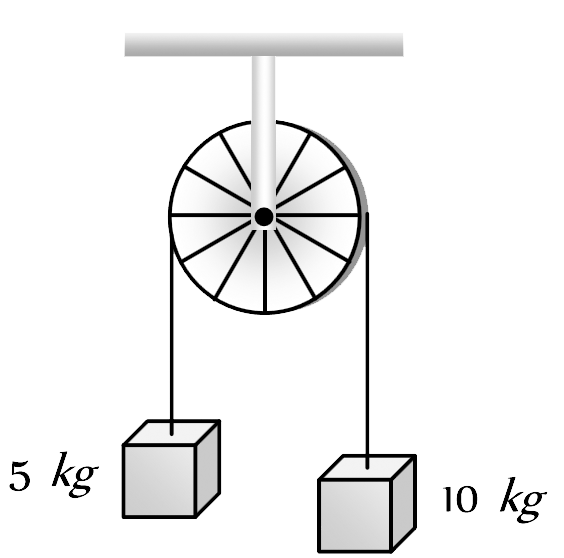Three forces P,Q and R are acting at a point in the plane. The angle between P & Q and Q & R are 150∘&120∘ respectively, then for equilibrium, forces P,Q & R are in the ratio Solution in Gujrati
1:2:3
1:2:√3
3:2:1
31/2:2:1
The correct Answer is:D

Pcos60∘=Rcos30∘
∴P=R√3
Q=Psin60∘+Rsin30∘
Q=R√3×√32+R2=2R
P:Q:R=√3:2:1
Topper's Solved these Questions
- NEWTONS LAWS OF MOTIONBOOK - ALLEN CHAPTER - NEWTONS LAWS OF MOTIONEXERCISE - EXERCISE-III
28 Videos
- NEWTONS LAWS OF MOTIONBOOK - ALLEN CHAPTER - NEWTONS LAWS OF MOTIONEXERCISE - EXERCISE-I
52 Videos
- NEWTON'S LAWS OF MOTION & FRICTIONBOOK - ALLEN CHAPTER - NEWTON'S LAWS OF MOTION & FRICTIONEXERCISE - EXERCISE (JA)
4 Videos
- RACEBOOK - ALLEN CHAPTER - RACEEXERCISE - Basic Maths (Wave Motion & Dopplers Effect) (Stationary waves & doppler effect, beats)
25 Videos
Similar Questions
Assertion: The driver in a vechicle moving with a constant speed on a straight road is in a non-inertial frame of referance.
Reason: A reference frame in which Newton's laws of motion are applicable is non-inertial.
View SolutionUSS 150) Two masses of 5 kg and 10 kg are connected to a pulley as shown. What will be the acceleration of the system (g= acceleration due to gravity)

View SolutionA piece of wire is bent in the shape of a parabola y=kx2 (y-axis vertical) with a bead of mass m on it. The bead can slide on the wire without friction. It stays at the lowest point of the parabola when the wire is at rest. The wire is now accelerated parallel to the x-axis with a constant acceleration a. The distance of the new equilibrium position of the bead, where the bead can stay at rest with respect to the wire, from the y-axis is:
View SolutionThe frequency of a radar is 780 MHz. After getting reflected from an approaching aeroplane, the apparent frequency is more than the actual frequency by 2.6 kHz. The aeroplane has a speed of
View SolutionThree forces P, Q and R are acting on a particel in the plane, the angle between P and Q and that between Q and R are 150^(@) and 120^(@) respectively. Then for equilibrium, forces P, Q and R are in the ratio
View SolutionThree forces P,Q and R are acting at a point in the plane. The angle between P & Q and Q & R are 150^(@) & 120^(@) respectively, then for equilibrium, forces P,Q & R are in the ratio
View SolutionThe points (p,q +r) , (q, r+p) and (r, q+p) are _______.
View SolutionIf p, q and r are perpendicular to q + r, r + p and p + q respectively and if |p + q| = 6, |q + r| = 4√3 and |r + p| = 4, then |p + q + r| is
View SolutionIf p, q and r are perpendicular to q + r, r + p and p + q respectively and if |p + q| = 6, |q + r| = 4√3 and |r + p| = 4, then |p + q + r| is
View SolutionSimply
(apaq)p+q−r.(aqar)q+r−p.(arap)r+p−q
View SolutionFind the angle between the lines whose direction ratios are
p, q, r and q-r, r-p, p-q
View SolutionThe resultant of the two forces P is Q R. If Q is doubled, then the new resultant force will be perpendicular to P. Prove that Q = R
View SolutionThree numbers p, q, r are such that pq=qr, where p,q,r>1 then the correct relation between q and r is :
View Solutionদেখাও যে, (p, q,r), (q,r, p) এবং (r, p,q) বিন্দু তিনটির সংযোগে একটি সমবাহু ত্রিভুজ উৎপন্ন হয়।
View SolutionThree numbers p, q, r are such that pq=qr, where p,q,r>1 then the correct relation between q and r is :
View Solution
